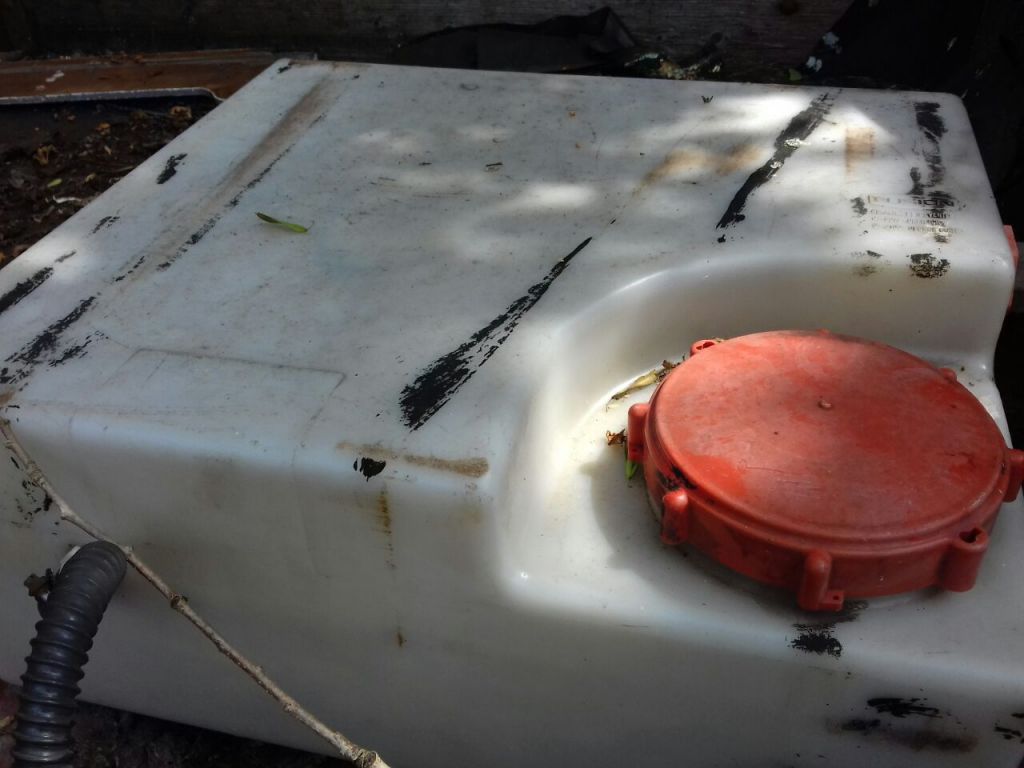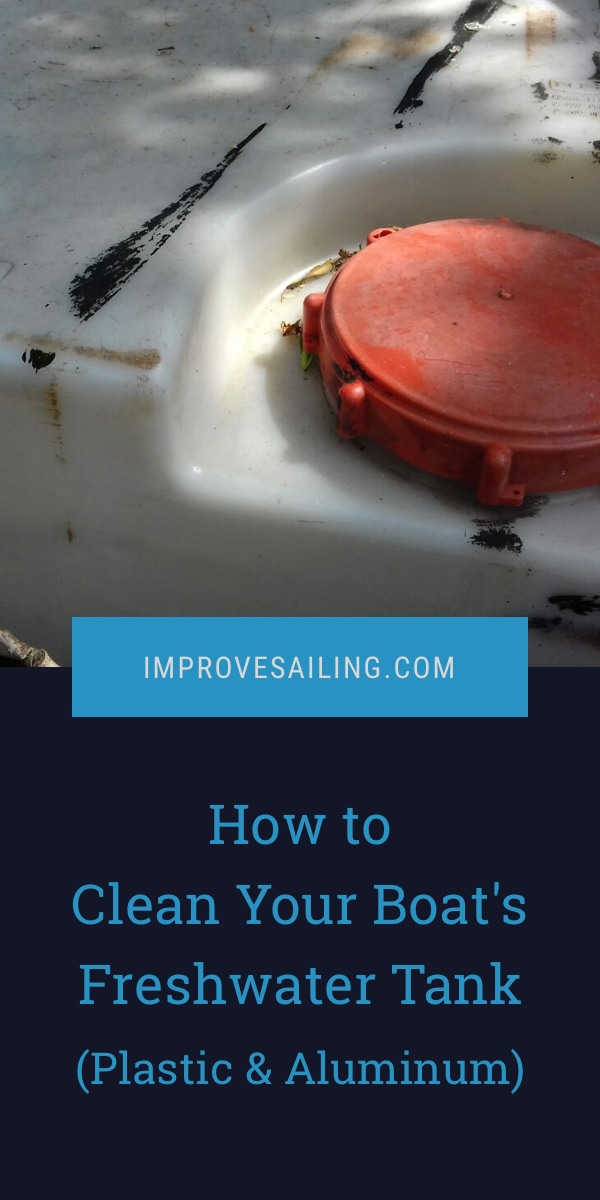How To Clean Your Boat's Freshwater Tank (Plastic & Aluminum)
Cleaning the fresh water tank in your boat is one of the most essential things you should do regularly to ensure smooth sailing. You need safe and clean water onboard to drink, bath, cook and clean. This can only be achieved by maintaining a clean water system. Today, I will guide you step by step on how to clean your freshwater tank, both plastic, and aluminum.
How to clean your boat's freshwater tank:
- Drain the tank completely
- Measure 1 teaspoon/gallon of household bleach (aluminum) or vinegar (plastic) into the tank and add fresh water until it’s full
- Let it sit for 24 hours to sterilize, then drain the water
- Fill with fresh water and drain repeatedly until all the bleach/vinegar odor is gone
This job should take you anywhere from 5-10 hours.
After this process, your tank should be clean and safe to put in fresh water for use. The problem is that sometimes your tank needs more than this method to be clean. Continue reading to find out how you can leave your tank sparkling clean.

On this page:
How to Ensure the Water Tank is Uncontaminated and Squeaky-Clean
Sanitizing your fresh water tank will greatly help in removing the strange odor and bad taste of the water onboard. It will greatly reduce the occurrence of coliform bacteria and will ensure the health of everyone onboard.
Fortunately, keeping the water tank in a better condition to provide good-tasting and drinkable water is very easy.
To start with, check if there’s detritus accumulation on the tank. You can do this from the equipped with inspection and cleaning ports on the tank.
To check, put on a sanitary glove and swab inside the tank with your finger. If it’s slimy or emits an odor, your tanks should be cleaned with detergent and sanitized.
If you haven’t cleaned your water tanks properly in a long time, you might find a thick even stubborn crud layer in the bottom.
Even though removing the tank out of the boat and steam-clean it works great, many of the times it’s not practical. For tough cases though, you should probably steam clean them.
Otherwise, you can use the following steps:
- Empty all the water in the tank
- Add a few inches of ice cubes in the tank
- Add a small amount of water for the cubes to slide the bottom of the tank
- Take the boat in a place with wave action for the cubes to slosh on the bottom of the tank. - The cubes will scrub the bottom as they melt
- Remove the water filters to avoid the clogging and then flash the tank until everything is clear
- Make sure you flush with clean water to avoid sanitizing again later
What to Use to Clean Water Tanks?
- For the first rinse, steam cleaning is the most effective way. If your tank is in bad shape, steam cleaning is the way to go.
- If you don't have a steam cleaner, use a pressure washer instead.
- For steel and aluminum tanks, you can use bleach to flush the system.
- For plastic tanks, you can use vinegar or lemon.
- You can also get a special Water Tank Flush, which works well, but is more expensive.
This last one works surprisingly well. The organic acids will dissolve any debris. Vinegar, however, won't leave any odors.
Some tips on using bleach
Plastic tanks may retain chlorine flavor, so I'd recommend trying to use vinegar before trying anything else. Also, if you're using bleach, I would disconnect all the outlets. If it gets into your lines, your water will taste like chlorine for a while. It doesn't hurt, but it doesn't taste nice either.
Sanitizing
After cleaning the tank from the buildup, it’s time for sanitizing the water system: “System” because it does no good to clean the tank and leave the pump, lines, and others.
You can sanitize the system by adding home bleach 1 teaspoon per gallon or precisely 8 ounces per 10 gallons of the water in the tank.
CAUTION: This bleach is to sanitize the system, it’s not fit for drinking!
Pressurize the water with the system open but turn off the end outlets. Let it sit for 24 hours;
After that flash the water with each outlet starting with the furthest from the pump. Do this with all the outlet and repeat the flush until all the bleach smell is gone.
Warning: for Aluminum tanks, you should not sit the bleach for more than 24 hours. Also, you should not repeat this process for more than twice a year.
The Freshwater Tank Refill
At this point, the system is clean and sanitized. It’s now time to fill the water tank with fresh water from different sources; you can get from outside sources or use the onboard water maker to refill the tank (water from the onboard maker is often sterile and pure).
If the water is coming from outside source however you must take extra caution. For starters, make sure the fill cap is in good condition to avoid water leaks into the tank with contaminants. It makes no sense to clean the tank and put in contaminated water from outside.
Ensure the hose pipe that you are using to fill in your tank is FDA rated to use for potable water. Also, before you put it directly into your tank, let the water run first to flush the hose. Understand: a hose with water in the sun can be a home to many living organisms.
Note: A better solution is to have your own horse which you flush after use and store safely.
Also running water will help you to know the condition of the water from the source. If the water looks dirty, don’t fill in your tank with it. It might be contaminated with things like cyst, bacteria or even metals, there is no need to take chances.
Tip: the key to having clean water onboard is usage. Keep the water flowing in and out of the system regularly to reduce the chance of it becoming stale.
Filtering and Sterilizing the Incoming Water
IF you are getting water from an outside source that you are unsure of its safety, you must take extra caution to make sure you are getting quality and clean water. You can guarantee this if you use sterilizers and filters.
When buying a water filter, make sure that it has met all the Microbiological Purification Standards. With this, you can eliminate all the cysts, viruses and bacteria from the water.
Alternatively, go for an Ultraviolet Sterilizers. With this, the water is sterilized by UV lamp that produces UV radiation to kill bacteria.
In addition, add a filter to remove other contaminants.
Chemical water treatment
A good alternative to treat the onboard fresh water in the tanks is by use of chemical products. There are different varieties you can find out there although you be cautious to read on the label because different products have different usage. You might find some that just remove the smell and taste of the water while other sterilizes the water to make it bacteria free.
Often, Iodine and Chlorine based products are better solutions to make questionable water safe to use. If this is not available, use home bleach; ½ teaspoon for 5 gallons and let it sit for 30-60 minute and it will be good to drink.
Checking if the water is safe for use
The best way to determine if the water in the tank is safe for use is to have it tested. Visit a local lab. if you don’t know any visit your local health department and they will direct you.
This method though is only valid only for the water in the tank. Alternatively, purchase a self-testing kit, which although they are not as accurate they can indicate if there is a problem with the water.
Related Questions
How to empty holding the tank on the boat? There are two ways that you can empty the holding tank; one, go at least three miles offshore and empty the tank there or go to a fuel dock with a Marine Sanitation Device (MSD) and a waste pump to empty it for you.
How to install a freshwater tank on a boat? The freshwater tank should be installed close to the middle of the boat. Have a small water pump and enough hose. Get the measurement where the hose should run and fit it. Add a T connection to the pickup line on the pump and run one hose into the tank and the other outside of the boat. Next cut the drainage outlet, place the tank to the selected location and fix everything tight and the tank is ready for use.
How to prime a fresh water pump on a boat? To prime water pump on your boat, start by ensuring there is enough water in your tank then checking the filters and screens to make sure they are working alright. Next opening an outlet like the facet to let the air out and it will prime.
Did you find the answer to your specific question?
👍 21 👎 1

Comments
John Robbins
One teaspoon in 1/6 of an ounce. One teaspoon per gallon is 1.67 ounces for 10 gallons, not 8 ounces! That is way too much bleach.
Elina Brooks
Thank you for letting us know that steam cleaning is the most effective way to clean a fuel tank, especially if it’s in a bad shape. My dad owns a fishing boat, and he was thinking of getting a new fuel tank for it soon. I’ll be sure to tell him about this before he gets a custom order for his aluminum fuel tank soon. https://www.mycarrenterprise.com/boat-fuel-tank
Leave a comment